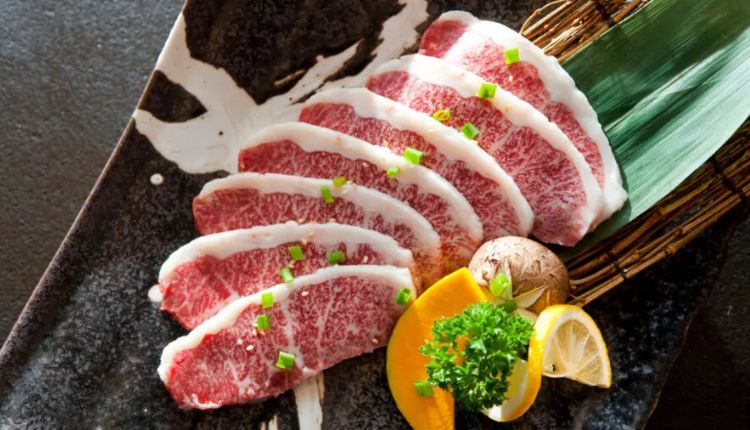Wagyu beef has long been synonymous with luxury dining, with its roots tracing back to Japan’s meticulous breeding traditions. The Japanese government established strict regulations to preserve the quality and exclusivity of Wagyu cattle, leading to a product revered around the world for its marbling and rich flavor. A5 Wagyu, the highest grade, represents the pinnacle of this tradition, but it also comes with extraordinary costs and limited accessibility.
As the demand for premium beef spread beyond Japan, American ranchers began importing Wagyu genetics and crossbreeding them with established cattle breeds. The result was American Wagyu, which preserves the intense marbling and tenderness of Japanese Wagyu while offering a broader range of flavors and textures. This adaptation has allowed more consumers to experience Wagyu’s unique qualities without the same price barriers or logistical restrictions.
Today, Wagyu’s global recognition is not just about taste but also about its status as a cultural symbol of refinement. The difference lies in how different regions adapt the product to their markets, and the American approach has been particularly successful in striking a balance between quality and availability. American Wagyu has become a meaningful alternative for diners who want an elevated steak experience without having to import A5 beef from overseas.
Accessibility Through Domestic Production
One of the key reasons American Wagyu is more accessible than A5 Japanese Wagyu is the straightforward fact of geography. Japanese Wagyu must be imported, which subjects it to tariffs, shipping costs, and limited supply. These constraints translate into higher retail prices and smaller distribution networks, making it a delicacy reserved for very few.
American Wagyu, on the other hand, is produced domestically, with ranchers across the United States raising cattle under conditions tailored to American markets. By eliminating international shipping and leveraging a larger agricultural infrastructure, producers are able to deliver Wagyu beef to consumers with far fewer cost barriers. This shift is especially evident in restaurants and online markets, where American Wagyu is increasingly offered as a regular menu item rather than an exclusive feature.
For consumers, this means that what was once available only in high-end steakhouses or specialty import shops can now be purchased directly from farms or online platforms. Premium brands such as Destination Wagyu make it possible to order domestically raised American Wagyu selections with ease, bringing world-class beef directly to households across the country. Accessibility is no longer about settling for less but rather about choosing an option that balances quality with availability.
Differences in Grading and Standards
Japanese Wagyu is graded according to a system that evaluates yield and quality, with A5 representing the highest possible designation. This grade accounts for marbling, color, texture, and fat quality, all of which must meet exceptionally strict thresholds. While this system guarantees unparalleled quality, it also limits the amount of beef that can achieve the top score, driving up prices.
American Wagyu operates under a different grading standard that often uses the USDA system or hybrid evaluations adapted for Wagyu-cross cattle. Instead of focusing solely on one narrow set of criteria, American producers offer a wider spectrum of marbling and flavor profiles. This means that consumers can choose cuts that match their personal preferences, whether they want extreme richness or a more balanced steak experience.
These differences in grading are not a matter of one being superior to the other but rather reflect two distinct approaches to beef production. Japanese Wagyu emphasizes perfection and exclusivity, while American Wagyu prioritizes versatility and accessibility. This flexibility has made American Wagyu appealing to a broader audience, especially for those who appreciate premium beef but may not seek the intensity of A5 every time they cook.
Price Considerations and Value Proposition
The cost of A5 Wagyu is one of its defining characteristics, often reaching hundreds of dollars per pound. This pricing reflects both the rarity of the product and the expense of bringing it into foreign markets. For most consumers, the cost alone makes A5 Wagyu more of a once-in-a-lifetime experience than a recurring indulgence.
American Wagyu, while still premium compared to commodity beef, generally comes at a fraction of the cost of A5 imports. The ability to produce and distribute the product domestically lowers prices significantly, creating opportunities for a wider consumer base. This price differential has allowed American Wagyu to enter mainstream markets in a way that A5 Japanese Wagyu cannot.
When evaluating value, American Wagyu offers a compelling middle ground. It provides exceptional marbling, tenderness, and flavor, but at a price that aligns more closely with upscale dining rather than unattainable luxury. This positioning is what makes it accessible, not only financially but also in terms of availability and repeat consumption.
Flavor Profiles and Culinary Versatility
One of the distinctions between A5 Wagyu and American Wagyu lies in the eating experience. A5 Wagyu is intensely rich, with fat marbling that practically melts at room temperature. While extraordinary, this richness can overwhelm the palate, making it best enjoyed in small portions rather than as a main course for everyday dining.
American Wagyu, due to its crossbreeding, often presents a more balanced flavor that blends the buttery marbling of Wagyu with the robust beefiness of Angus cattle. This combination creates a steak that can be enjoyed in larger servings, whether grilled, seared, or prepared in more traditional American styles. The versatility appeals to both fine dining chefs and home cooks who want premium quality without the constraints of overly rich flavor.
The culinary flexibility of American Wagyu also enhances its accessibility. From gourmet burgers to ribeye steaks, it can be adapted across a wide range of dishes that fit American preferences. While A5 Wagyu remains a marvel for those who want to experience beef at its richest, American Wagyu delivers excellence in a format that is practical for more occasions.
Distribution Channels and Consumer Reach
A5 Wagyu’s distribution outside Japan is highly limited, with only a select number of restaurants and specialty markets carrying it. The exclusivity is part of its allure but also restricts who can realistically experience it. Even when available, supply chain challenges and high markups add another barrier to entry.
American Wagyu benefits from a robust domestic distribution network. It is sold through grocery stores, butcher shops, restaurants, and increasingly through direct-to-consumer online platforms. This diversity in channels ensures that consumers across different regions of the United States can access the product without having to rely on rare import opportunities.
The growth of e-commerce has further amplified this accessibility. Ranchers and premium meat brands have embraced online sales to deliver American Wagyu directly to consumers’ doors. This digital expansion ensures consistent availability, while A5 Wagyu remains largely bound by its niche status and limited import quotas.
The Broader Cultural Shift Toward Accessible Luxury
The rise of American Wagyu reflects a larger cultural shift in how consumers approach luxury goods. While exclusivity still holds value, many consumers now prefer experiences that can be integrated into their daily lives. Accessible luxury is about balance, providing moments of indulgence without alienating practicality.
American Wagyu embodies this concept by offering the refinement of Wagyu without the barriers of rarity and cost. It appeals to consumers who value quality and are willing to pay a premium, but who also expect accessibility and reliability in return. This shift is evident not only in the beef industry but also in broader food and lifestyle trends where quality and availability intersect.
As consumer tastes evolve, American Wagyu is positioned to grow as a central part of the premium beef market. Its accessibility does not diminish its quality but rather broadens the scope of who can enjoy it. A5 Japanese Wagyu will continue to hold its place as an icon of luxury dining, but American Wagyu is redefining what it means to indulge in excellence.






